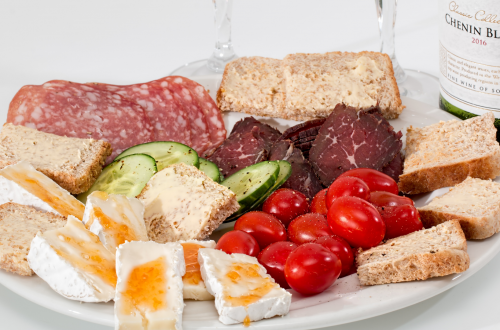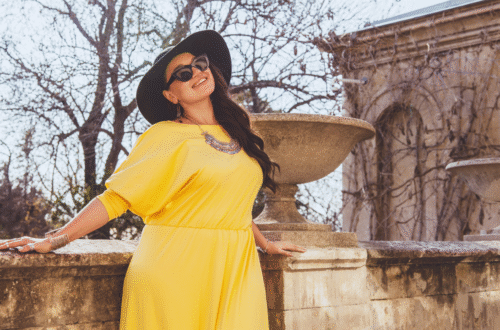
Fashion, Mental Health, and Body Confidence: Empowering Self-Expression Through Style
Fashion is more than an aesthetic; it serves as a powerful tool for expressing identity and enhancing self-esteem. Many individuals find that the clothes they wear have a significant impact on their mental well-being. By choosing outfits that resonate with their personal style, people can boost their body confidence and improve their mood.
The connection between fashion and mental health is rooted in the way self-expression can foster a positive self-image. When someone feels good in their clothing, it often translates into greater confidence, which can help combat anxiety or negative body image. Exploring different styles and trends allows individuals to discover what makes them feel empowered.
Additionally, as society increasingly embraces diversity in body shapes and sizes, fashion becomes a platform for challenging unrealistic standards. This shift encourages individuals to celebrate their unique bodies and cultivate a healthier self-perception, reinforcing the idea that confidence comes from within.
The Interplay Between Fashion and Body Confidence
Fashion plays a significant role in shaping body confidence and self-esteem. The clothing industry often sets trends and standards that influence how individuals perceive their bodies. From fit and style to representation in media, these factors can affect how people feel about themselves and their appearance.
While clothing allows self-expression and creativity, some individuals explore other ways to feel more aligned with their ideal self-image. Plastic surgery, for instance, can serve as an alternative for those who wish to refine certain features or restore confidence in their appearance. When performed with care and precision, it can complement one’s natural beauty rather than redefine it. Professionals like Dr. Robert Sigal and similar others, focus on achieving results that enhance individuality, helping people feel more comfortable and confident in their own skin, both inside and outside of fashion.
Choosing the right surgeon is central to achieving outcomes that feel authentic and boost confidence. Board-certified surgeons who emphasize individualized planning, conservative technique, and patient safety can help ensure results that harmonize with a person’s proportions and lifestyle. For readers seeking more information on an artistically driven, safety-focused practice, resources such as The Clinic for Plastic Surgery outline common procedures, realistic expectations, and what to cover during a consultation. Understanding these factors can make the decision to pursue subtle enhancements more informed and empowering.
Influence of Fashion Trends on Body Image
Fashion trends often inspire people to embrace change and express themselves in new ways. As styles evolve, they influence how individuals view beauty, encouraging creativity and confidence in personal presentation. These ever-changing trends celebrate individuality and empower people to explore looks that best reflect their personality and lifestyle.
For many, enhancing their natural features through aesthetic treatments has become part of that self-expression. Procedures performed by experienced professionals, like Dr. Shaun Patel or similar others, can help individuals achieve refined, confidence-boosting results that align with their unique goals. Rather than altering identity, today’s approach to plastic surgery focuses on subtle enhancement, helping people look refreshed, harmonious, and authentically themselves. In this light, self-improvement becomes a celebration of personal empowerment and self-care.
Size Labels and Beauty Standards
Size labels heavily influence consumer choices and self-worth. The fashion industry uses a system that often does not align with actual body measurements, leading to confusion and disappointment. For example, a person may wear different sizes across brands, contributing to negative self-perception.
Moreover, beauty standards perpetuated by media and advertising can create unrealistic comparisons. Individuals may equate smaller sizes with attractiveness and success. Addressing these issues requires a shift towards a more inclusive approach, allowing people to feel confident regardless of their size. Increased awareness and advocacy can help reshape perceptions around size and beauty in fashion.
Mental Health Impacts of the Fashion Realm
The fashion realm significantly influences mental health, with its standards and trends often dictating personal self-image. Many individuals grapple with the pressures placed upon them by societal expectations in fashion. This can lead to serious mental health concerns.
Fashion Industry’s Role in Mental Health Issues
The fashion industry often emphasizes unrealistic beauty standards, impacting individuals’ self-esteem and mental well-being. Exposure to idealized body images can lead to anxiety and depression in those who feel they do not measure up.
Prominent brands and media portray slender, flawless figures, contributing to the rise of eating disorders. A significant proportion of individuals report feeling inadequate when comparing themselves to these standards. Additionally, the prevalence of social media exacerbates these feelings, as curated images dominate platforms.
The Psychological Effects of Clothing Choices
Clothing choices play a vital role in how individuals perceive themselves and how they navigate their social environments. Wearing certain styles can elevate mood and boost confidence, promoting overall well-being. Conversely, feeling out of place in clothing can trigger anxiety and self-doubt.
Fashion serves as a powerful form of self-expression, allowing people to embrace their individuality and celebrate their uniqueness. The right outfit can inspire confidence, foster positivity, and help individuals feel more connected to their sense of identity. True beauty shines through when people feel comfortable in their own skin and confident in how they present themselves.
Digital Era: Social Media’s Role in Shaping Perceptions
Social media profoundly impacts how individuals perceive fashion, body image, and self-worth. Platforms like Instagram and TikTok create environments that both uplift and challenge body confidence.
Instagram, TikTok, and Body Image
Instagram and TikTok are key players in shaping body image perceptions. Users often showcase curated lifestyles and idealized appearances, which can lead to body dissatisfaction among viewers.
Research indicates that exposure to influencers with specific body types can affect self-esteem. Many users may compare themselves to these idealized images, leading to feelings of inadequacy.
In contrast, some accounts promote body positivity and diverse representations. This movement encourages acceptance of various body types, fostering a supportive online community.
Combatting Negative Influences from Social Media Platforms
Addressing the negative impacts of social media requires conscious effort. Users can curate their feeds by following accounts that promote body positivity and realistic portrayals.
Many platforms have started implementing features to limit harmful content. Examples include:
- Content warnings for potentially triggering posts.
- Options to hide like counts, reducing the emphasis on social validation.
Education plays a crucial role in helping individuals recognize the filtered realities often presented online. By cultivating critical thinking skills, users can navigate content more mindfully, promoting healthier interactions with social media.
Embracing Body Confidence Through Self-Expression
Fashion serves as a powerful tool for individuals to express their identity and embrace body confidence. By exploring personal style and moving beyond fast fashion, one can cultivate a more sustainable sense of self-esteem and authenticity.
The Power of Personal Style
The personal style allows individuals to reflect their unique identities and beliefs. When people choose outfits that resonate with them, it reinforces their self-worth and body confidence.
Key components include:
- Color choice: Bright colors can boost mood, while darker shades may convey elegance.
- Silhouette: Experimenting with different shapes can create a sense of empowerment.
People often find that dressing according to personal preferences rather than societal pressures encourages self-acceptance. This acceptance leads to a healthier self-image and a greater appreciation for one’s body.
Moving Beyond Fast Fashion to Sustainable Self-Esteem
Fast fashion often promotes unrealistic beauty standards and can lead to negative body image. By opting for sustainable choices, individuals contribute positively to the environment while fostering body confidence.
Sustainable options can include:
- Thrift shopping: Unique pieces can express individuality.
- Eco-friendly brands: Supporting businesses that prioritize ethical practices helps align values with fashion choices.
Embracing these sustainable methods allows for those who want to cultivate their style over trends to feel empowered. This shift encourages a deeper connection with oneself instead of conforming to fleeting fashion trends.




